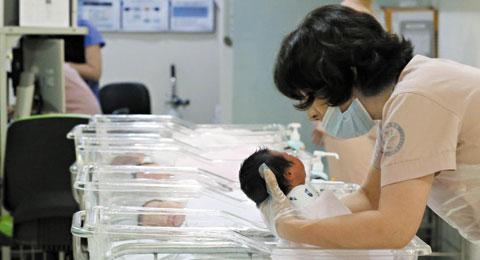Input 2021.01.03 13:42

◇”The low birth rate is likely to be faster… policy fundamental change is needed”
According to the resident registration demographics released by the Ministry of Public Administration and Security on the 3rd, as of December 31, 2020, the total number of residents registered in Korea was 5182,9023, down 2,838 (0.04%) from the end of last year. The population declined for the first time since the Ministry of Public Administration and Security began counting resident registration demographics.
The decline in the resident registration population was due to the phenomenon of’population dead cross’, in which the population naturally declines, with the number of deaths higher than the number of births for the first time last year.
The number of births last year was 275,815, down 10.65% (32,822) from the previous year. The number of births per year fell below 400,000 in 2017, and fell below 300,000 for the first time this year.
On the other hand, the number of deaths was 3,07764, an increase of 3.10% (9269) compared to the previous year. The number of deaths has increased from 2011 to 2018 and then turned to a brief decline in 2019.
The Ministry of Public Administration and Security analyzed that “a’population dead cross’, which has fewer births than the number of deaths, is the main cause of the first decline in the resident registration population last year. did.
◇ Population over 60s increased and teens decreased
The aging problem also appeared. When looking at the population by age group, the people in their 50s accounted for the largest share, with 86,450,014 (16.7%). This was followed by 16.0% in their 40s, 13.3% in their 30s, 13.1% in their 20s, 9.2% in their teens, and 7.7% in their under 10s.
When combined in their 40s and 50s, 32.7% of the total, accounting for about a third of the population by age in Korea. Those over 60 accounted for a quarter with 24.0%. Only 16.9% of the population under teens was.
Compared to 2011, the proportion by age group decreased by 4.0 percentage points for teenagers and 3.0 percentage points for those in their 30s.
On the other hand, those in their 60s increased by 4.7 percentage points and those in their 70s and older by 3.5 percentage points.
The Ministry of Public Administration and Security said, “While the population in the 30s and 40s and under the age of 10 has decreased rapidly, those in the 60s and over have increased to a quarter of the total population.” This is in earnest,” he said.
◇ The first single-person family surpassed 9 million… The most number of households ever
The number of households exceeded 23 million for the first time since statistics. At the end of last year, the number of resident-registered households was 23.93,108 households, an increase of 61,1642 households (2.72%) from last year.
The increase in the number of households in Korea is due to the increase in the number of single-person households.
Last year, the number of single-person households was 906,3362 households, an increase of 57,4741 households (6.77%) from the previous year. It has exceeded 9 million households for the first time ever
Single-person households also accounted for the highest proportion of all households. As of last year, the proportion of single-person households was 39.2%. In comparison, the proportion of households with 4 or more people was 20.0%.
The Ministry of Public Administration and Security explained that “the change in the traditional concept of family is appearing as a generational change,” and “this shows that the direction of national policy needs to be revised in various fields such as housing, welfare, and environment.”
